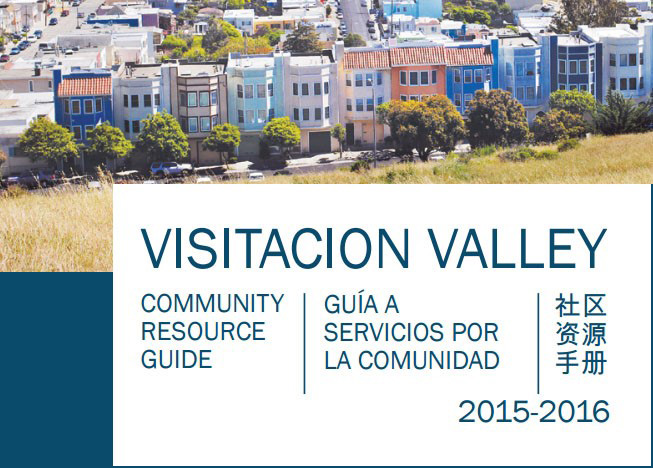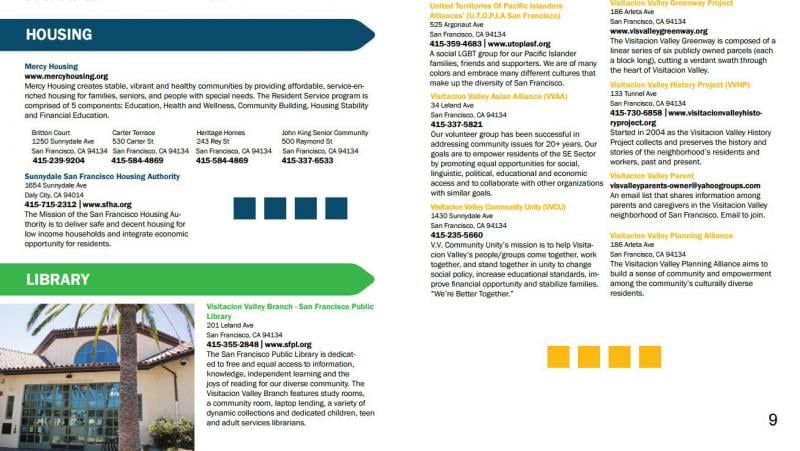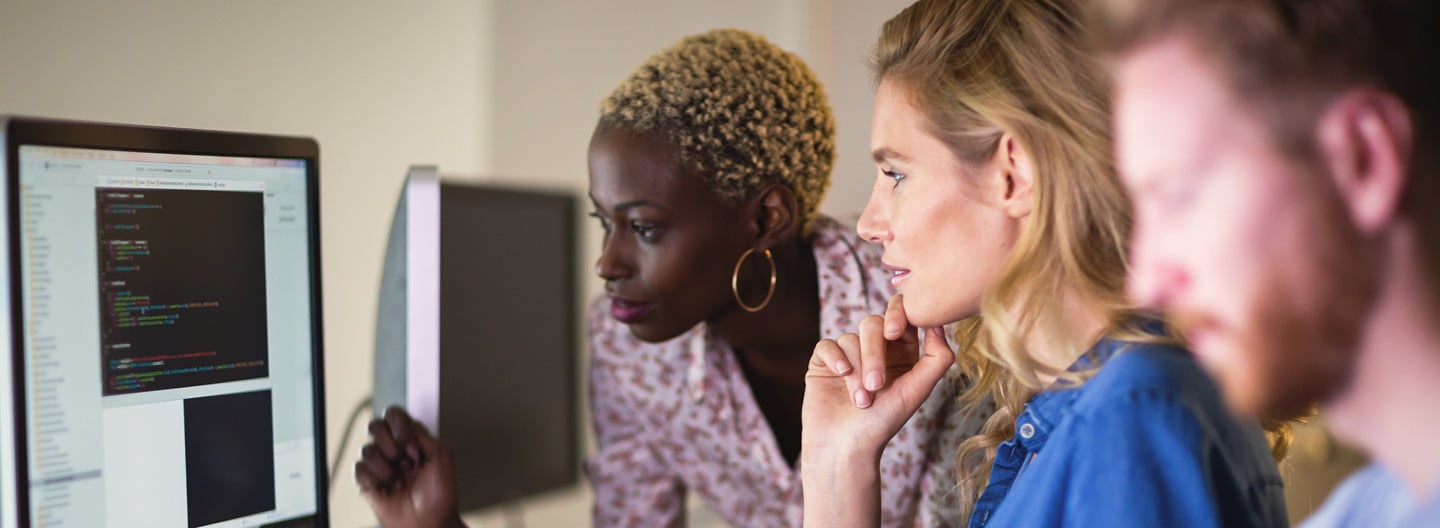This blog post is more than five years old. It may contain outdated information or refer to products that are no longer available.
At TechSoup, we're all about community organizations coming together to improve the quality of life for citizens. So when I heard about a collaborative project between nonprofits, city agencies, and the local library happening in my own backyard (almost literally!), I knew I had to write about it.
The Visitacion Valley Resource Guide, available in both online and print formats, is a comprehensive guide to local elected officials, employment services, child care, parks and playgrounds, faith-based organizations, public safety, and more for this sometimes underserved San Francisco neighborhood.

Because many residents of Visitacion Valley don't have Internet access at home and/or don't speak English, it can be difficult for them to find local information. The resource guide, available both online and in print, helps connect people to neighborhood information.
A Nonprofit-Driven Community Project
The project was spearheaded by Real Options for City Kids (ROCK), a neighborhood nonprofit and TechSoup member. ROCK aims to promote positive development and long-term success of Visitacion Valley youth through in-school and after-school programs. I spoke with Curt Yagi, the executive director of ROCK, about how the guide came about and the collaborative work that went into it.
The idea for a community resource guide came up during a community meeting with the neighborhood's city district supervisor, Malia Cohen. A neighborhood guide had never been done before in Visitacion Valley, much less any other neighborhood in San Francisco. Cohen procured a small grant through the Mayor's Office of Housing and Development for the project and nominated Curt and ROCK to take the lead on it.
Curt organized a small community team of neighborhood residents, nonprofits, and other stakeholders. He said his team spent countless hours getting descriptions of agencies or services, verifying phone numbers, and finding other relevant information. One of the most difficult tasks was getting these agencies and organizations to actually call back!
Technology and Volunteers Make It Happen
To collect and organize data, the team members used Google docs and Google forms. They asked community partners to complete and fill out the information that would be included in the guide (such as address, telephone number, website, description, and so on). Curt said that they had to fill out much of the information themselves to keep it consistent.
He scouted volunteers to help with both the design and translations of the guide. The designer was actually based in Chicago and was looking for ways to build out her portfolio. The volunteer translators were also an important find, because the Visitacion Valley neighborhood has a large number of Spanish-and Chinese-speaking residents.
The Finished Product

Curt said that the team members identified partners to distribute the guide, such as schools, nonprofits, and local businesses. He said that they plan to work with local elementary and middle schools to distribute the guide when school starts.
The Library as a Community Hub
The Visitacion Valley Library is where ROCK held the launch event for the guide. The local library is a great place to hold a community event because a) it's centrally located and b) you can reserve a room for free! The library is also a place where people come to seek information, so naturally, residents can pick up the guide at the Visitacion Valley branch.
The Aspen Institute's A Renewed Vision of the Public Library report describes the public library as a place where "people are at the center." Here's more from the report:
"Library staffs anticipate individual and community needs and connect people to available resources, both locally and globally."
By being both a provider and facilitator of the resource guide, the Visitacion Valley Library demonstrated its interest and impact in the neighborhood. While the library didn't directly work on building the guide, the staff's support shows how "people-centric" the library's work is.
How to Spearhead Your Own Community Guide
Inspired by ROCK's story? You can create your very own community guide, too! Here are a few tips:
- Identify key stakeholders and ask them to participate
- Designate a lead person or organization
- Seek out a community grant or try a fundraising campaign to support the project
- Find out what languages are spoken in your community
- Use a cloud-based tool to collect and share data
- Look at other community guides for inspiration
- Find volunteers to cover tasks your organization can't
- Host a launch event and invite your community to attend!






